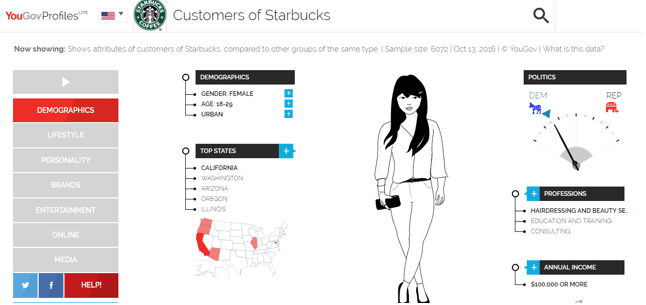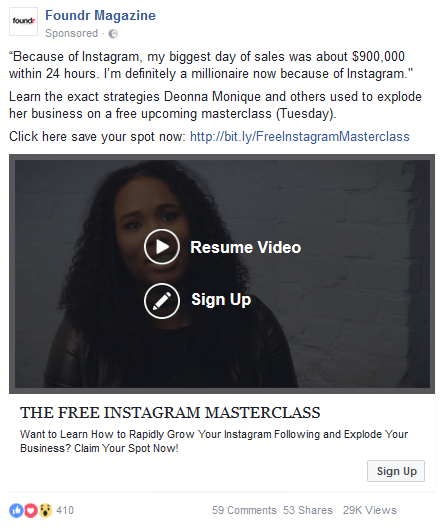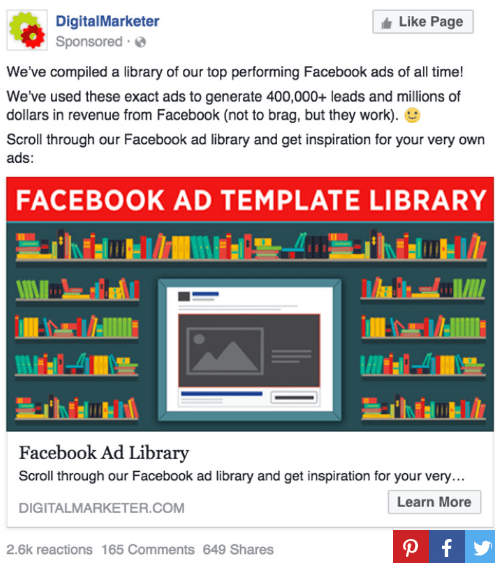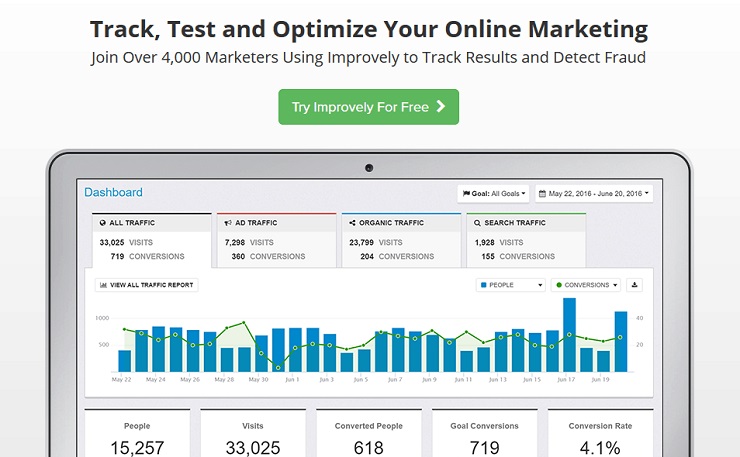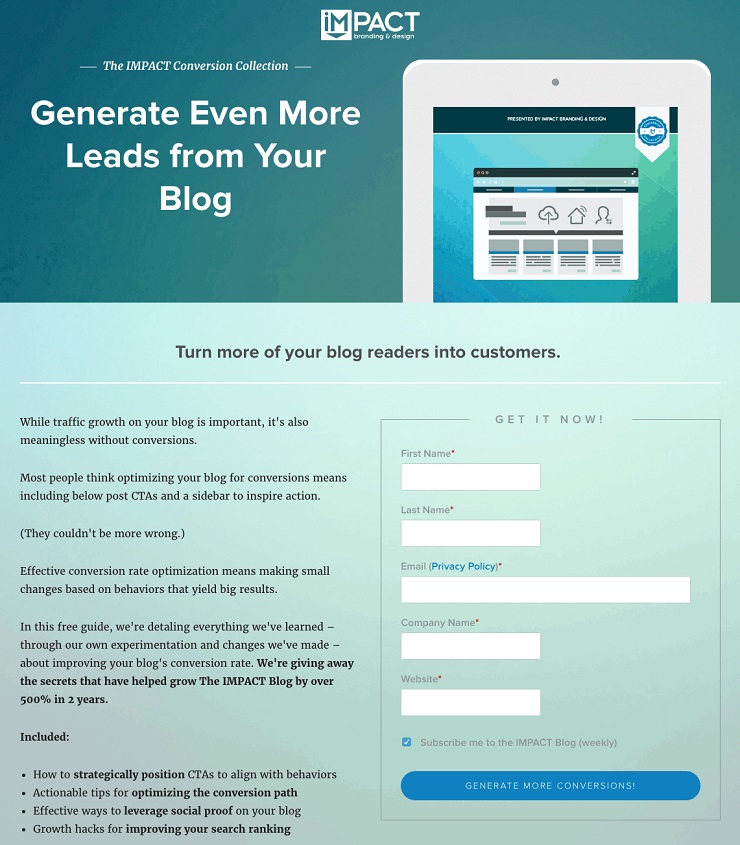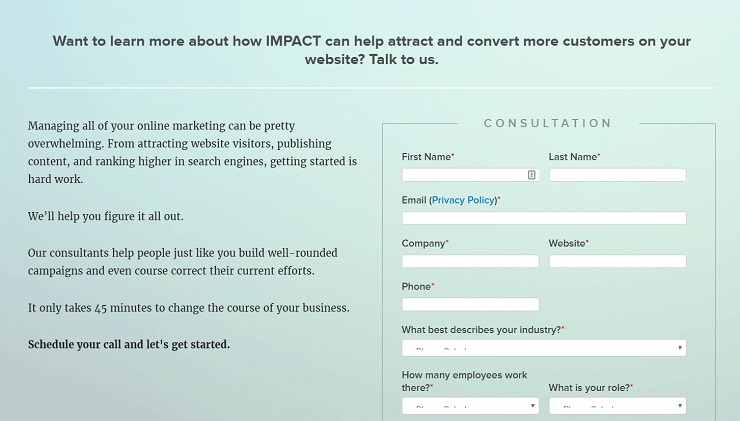Marketing can be a daunting aspect of business for any entrepreneur, novice or expert. Especially if you’re just starting a new business, you’re eager to get out there and speak to your audience, but there are so, so many ways to get started in online marketing. Too many missteps can drain your resources and run your exciting new startup into the ground before it even has a chance to thrive.
You can cast your eyes daily on hot takes from experts telling you that this marketing method is the one for you. But which one do you choose? Which one really is best for you? Should you solely look to build an email list? Instagram? Is there some secret formula?
It’s difficult to know which route to head down, and inaction can be just as bad as making a wrong move. I often see entrepreneurs spending hours on webinars trying to figure out what to do next.
On the other end of the spectrum, the worst thing you can do is attempt every single marketing method under the sun, in the hopes that one will launch you into the millionaires club overnight. Fortunately, we’re in the golden age of
entrepreneurship, and resources like Foundr are here to sift through the sea of information that’s out there, and deliver the best, actionable advice.
That’s precisely what I’ve embarked on with this article. I hope to provide you with just the good stuff—the five most important steps to take when embarking on online marketing.
It doesn’t matter if you provide a service, a product, or work in e-commerce—these apply to all. I use all of these tactics with my current clients, and we’ve had major success with them. We’ll walk through each tactic, one step at a time, so you know exactly what you’re doing without wasting time. These tips won’t leave you working endless days, weeks, or months on one particular route to market with no avail.
Before we get started, there is one key thing to remember throughout, and that is, your marketing is not just about you and your business. It’s about your customer. That should underscore your entire approach to online marketing, no matter what route you take.
OK, here we go!
Get Free Instant Access To 28 Proven Marketing Strategies For Startups Here!
1. Understand Your Audience
And I mean fully understand them.
Don’t just identify them. Find out their behaviors, interests, buying patterns, and habits.
If you’ve started, or plan to start a business, it’s likely you have already identified the age, gender, and location of your customers. Let’s face it, everyone does this first and thinks they suddenly know their customer. Let’s say you produce a gadget for driving and you currently understand your audience as American men, 18 to 34. This isn’t enough.
Dive deeper. Really start to understand who you’re talking to, where they are, and how to reach them. Take a look at YouGov Profiles. It’s a very basic segmentation platform that, after registering for free, allows you to search for brands and see background data on that particular audience. Of course, don’t base your decisions solely on these results, but they do give a good starting point that you can use to investigate and build upon.
In this example below, I searched customers of Starbucks to get an idea of the demographics. If I were a Starbucks competitor, I would use this tool to dive deeper into my audience and get to know them better.
Here’s a few questions for you to ask yourself when diving into your customer’s demographics:
Which TV shows do they watch?
Who’s the biggest personality in your industry?
What’s the largest problem in your industry?
What are their needs?
What do they think now and what do you want them to think and feel?
How are they buying?
What times are they most active online?
This will form a core element to where and when you will carry out marketing activity further down the line. The more information you can gather about your audience, the better you will be able to reach them. Please always remember though, your audience should be relevant to what you do as a business. Not anybody else. Other useful tools you can use include Monitor, which allows you to watch keywords and phrases in your industry. Facebook Groups and conversations can also allow you to do some listening that will help further identify the needs and wants of customers.
2. Produce Video Content
I would say that producing video content is “up-and-coming,” but I won’t, because it’s here. It’s real, and it’s one of the most persuasive ways to get personal with your audience and encourage them to become part of your brand.
Not only can it showcase your brand, it can provide your business with monetary value, and help you build a trusting relationship with your audience. If you target them properly (see tip 1) and, through video, ensure that they understand your business, see your worth and trust you, you’re already onto a winner.
When using this method, there are two key areas to pay attention to: Make sure your content is educational and entertaining for your audience, and that whoever is on the other side of the lens is comfortable.
There’s the tricky part—a lot of people aren’t comfortable getting in front of the camera. In some cases, you don’t necessarily need to do this. Show your product in use, get testimonials from previous customers and use voiceover or text to communicate. But if you are a consultant, advisor, or coach, it’s probably a good idea to get in front of the camera. Make sure people get to know you!
If you feel you need to be a key part of your videos, set up a personal YouTube channel first to get more comfortable speaking to the camera. I’ve also spoken to people who have undertaken a “vlog challenge” where they post one short, 2-5 minute vlog each day on their social media pages over a certain period of time. A few examples of this challenge can be seen from the likes of Catalin Matei and Ginny Dwyer.
Although the quality of video content is growing all the time, these don’t necessarily need to be professionally shot videos. As the concept of video marketing has grown, so has the acceptance of vloggers, who do most of the filming by themselves.
I encourage all of my clients to get involved in video content. One particular client was running a weekend event, requiring marketing activity on a national scale. To keep the marketing campaign going while the event was happening, we took to social media and posted video content throughout the weekend. We posted a minimum of one video per day, but sometimes got to two or three. A number of video campaign examples can be found on my website, or check out our Saturday highlights video below.
One of the best vlogging cameras for quality footage is the Canon G7X. Although a bit pricey, it’s a useful investment and can make all the difference. Not to worry if this is not in your price range, though, most mobile phone cameras are of good enough quality to get you started. In fact, the iPhone 7 shoots in 4k resolution, which is more than ideal.
If you need more proof of video’s popularity, look no further than Eskil Nordhaug’s talk with Foundr, in which she recognized the direction video content was taking, and managed to successfully crowdfund $123,000 to make mobile video look amazing. You have nothing to worry about, people love it!
Get Free Instant Access To 28 Proven Marketing Strategies For Startups Here!
3. Invest in Online Advertising
But advertising is so old-fashioned, I hear you scream. In some cases, yes, but the key here is to get your brand seen online. Emarketer did some factual reporting in 2015, and stated that social network ad spending was to hit $23.68 billion worldwide, a 33.5% increase.
Let’s say you want to reach 2,000 people through advertising. You could put your valuable budget toward radio broadcasts, newspaper ads, magazine ads, and direct mail. This may cost you $3,000 or more. Yes, you will have conversions, but how easily can you monitor which performed best? Was the cost really worth it?
Online advertising alone could generate a reach of 2,000 with just $75-150. You’ve not only saved money and reached your audience, your monitoring methods have the ability to go beyond expectations as you continue to convert. Lessons learned and profits made will allow you to reinvest, reach higher numbers, and build higher profits. Do you see the cycle? Online advertising can be a simple, cost-effective way to find your customers. See what Foundr and its community are doing online, it’s incredible!
Based on personal experience working with thousands of customers, one of the key areas of brand discovery comes through online advertising. It’s a growing field, and becoming more important in business growth.
Facebook is perhaps the number one place for online advertising right now. Some are turned off by the fact that this social platform has turned into a marketing business. But as I noted before, there are billions of dollars being plowed into Facebook Ads. And for good reason.
Think of Facebook ads as a funnel. You can start with four different ads, and as time goes on you are able to make small tweaks to monitor what type of content responds best. After a few weeks of doing this, you’ll eventually notice patterns and recognize which copy, image, type of post and link is a big hit with your audience. Combine these all together, and you can eventually create your perfect online ad.
DigitalMarketer analyzed 440 ad campaigns they launched over the course of 12 months. Within each campaign there were at least two ad sets and eight ads, meaning over 12 months they were able to run at least 3,520 different Facebook ads. Check out their tips on most successful ads here.
Not only are they highly customizable, but you can specifically target your audience in more ways than one. By putting the “perfect” ad in front of your exact customer, your conversion rates will increase and your cost per click will decrease, leaving you with a cost-effective marketing method that produces results.
Now, the part you’ve been waiting for—money. Facebook ads allow you to set a budget. This means you can decide how much money you want to invest. A key mistake entrepreneurs and startups make is that they create an ad, and put mass amounts of money behind it. The more money invested, the better it will perform, right? Wrong.
Slow and steady funding can be very effective, but putting mass amounts of money into Facebook ads can often cause them to crash and burn. Facebook just can’t keep up. I’d strongly recommend starting on just a few dollars a day. I’ve spoken to Facebook ad experts who have created successful campaigns on just $5 per day. Start slow and build your ad system from there.
Let’s not forget that Facebook is not the only form of online advertising. You can run ads across all social platforms and there are agencies that specialize in “online listening” in order to put your ad on the sites your potential customers visit. Take a look at Instagram and Google ads and use pixels to retarget your audience. Pixels will give you detailed information on the audience engaging with your ad and will allow you to better tailor your ads for maximum impact. Retargeting will allow you to showcase your ad to a potential customer for a second or third time.
I make them sound super simple, but there are certainly other things to consider than just the above. I’m a big fan of the work Gavin Bell is doing right now. He’s a Facebook ads expert, and has launched his own online course on them, which you can do at your own pace and in the comforts of your own home. I’d encourage you to check it out, as the very last thing you want to do is waste valuable money by not carrying out the activity correctly.
4. Measure and Monitor Marketing Success
When working with clients, one of the biggest areas of improvement I see is in monitoring and evaluating marketing activity.
If you cannot see the benefits or drawbacks attached to each piece of marketing activity you’re carrying out, you will never fully understand where your strengths lie.
First, before you carry out any marketing activity, understand the cost and how many people will it reach.
Second, ensure you have a monitoring tool in place to measure success.
If you are carrying out marketing activity online, set up tracking links that can be directly associated with that particular piece of activity. These tracking links are unique links that all lead to the same page—it may be your ticketing page, sales page, landing page, or simply your website. Create separate tracking links to be used in email marketing campaigns, social media posts, banner ads, or online ads so that at the end of your campaign, you can spot which activities converted well, or which didn’t convert at all.
Tracking links can sometimes be set up within your CRM, or, for example, with your ticket provider. If you are running an event, Eventbrite is a system I’m familiar with that allows you to easily set up tracking links. If you are looking to use different tracking links for your website, Improvely and Google Analytics are useful platforms that allow you to start optimizing your online marketing.
Source: (Improvely)
For example, I will soon be looking to create a tracking link to a certain page within my website that will allow me to monitor the visits and conversions that are made purely from my email marketing methods. I do this here, generating the below link. If I use this link in my email marketing and load it into my Google Analytics I can follow how effective it has been for me.
Other companies use these tracking methods all the time, whether it’s around a new product launch or to simply view where and when their marketing activity is effective.
If you’re paying for TV ads, you will have received statistics on the reach of the channel. Make sure you request a report once the ads have been live, which shows exactly how many people your ads reached. Did your website peak at this point? Did you sell tickets/products/services in and around these times?
Monitoring your marketing activity or campaign can be done through a Critical Path document. This document is, in essence, a timeline, so that you can monitor exactly what activity is happening on each day of your campaign. I’m so passionate about this particular area of marketing that I include a free Critical Path template download on the bottom of every single email I send out to those who have signed up on my website. This document will give you a headstart and is the perfect place to start monitoring your activity. Sign up here and await the next email to get it.
All this is to constantly be asking: Did it work? Continually assess and reassess your marketing activity for future use. Know what works, and what doesn’t.
Get Free Instant Access To 28 Proven Marketing Strategies For Startups Here!
5. Build an Online Platform
At the core of all of your online marketing must be an online home base.
There are different types of online platforms available to entrepreneurs and startups, however I would suggest going for a website or a simple landing page. Start getting your word out there, and have a place where you can provide information and convert your audience into customers.
Understanding the difference between a website and a landing page is crucial.
A website will allow you to compartmentalize your business, but there are two key things your website must do: clearly show what product/service you provide, and reflect your brand image and values.
Google and Microsoft Research both reported that the majority of visitors to your website will spend 10 seconds or less on your home page, before making the decision to hit the back button or discover more. With so many websites out there, competition is tough. Make sure your page is designed well. On that note, be sure to check out this article that highlights reasons you need to make great design a top priority.
Ensure your home page is about your business prospectus and resonates with your audience. It’s not just about you! Going back to one of my previous tips, by adding video content to your homepage you will automatically increase your chances of creating opt-ins by 80%.
Landing pages are often used purely for lead generation. The primary goal of a landing page is to turn a visitor into a lead, and its defining characteristic is that everything on it serves that one goal of urging visitors to take that action. It will often contain a story to build trust and create emotion, and information to educate. These combined are known to initiate buy in and encourage a viewer to convert through a funneling process.
Source (Impact)
For example, with its landing page above, Impact offers a free ebook on how to generate leads from your blog. Once you opt in, Impact redirects you to a web page where you can request more information about its services:
The first thing to ask yourself is, “What is the goal of my online platform?” If you are looking to make a hard sell, a landing page may be the best option for you. Clickfunnels and LeadPages are very popular platforms for creating your own landing pages. They are easy to manage, build, edit, and publish so that you have a place to send your audience and start building a relationship with them.
If you’d like a website, some of the best sites I’ve seen have come from NB Communication, so getting them onboard as your designers would be a smart move. They offer a range of packages to suit budgets and do a top job at getting your message across.
On the other hand, you can design your own websites or landing pages on wordpress or weebly. The most important thing to remember is that your website is one of the first places your audience will visit. Making sure it’s clear, valuable, and functional is important, so investing in this can be a smart move.
Conclusion
Should you be feeling like a lost cause in a big world? Should your head be spinning with a hundred things to do? No way.
At the end of the day, everyone starts somewhere. Approaching your marketing is like approaching your Monday. Make a list of everything you want to achieve, make a plan to do them, and tick things off as time goes on before reassessing your progress. There is no better feeling!
So get out there, build your brand, research, read, follow good advice and one day your business will go further than you ever imagined.
Marketing is your overall battle plan, make it a good one.
If you’re feeling puzzled about anything or still not sure where to start, drop a message in the comments box below! You can also reach me directly with the contact info in my bio below.


